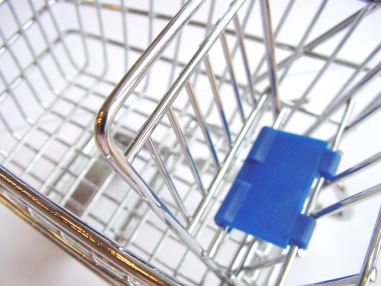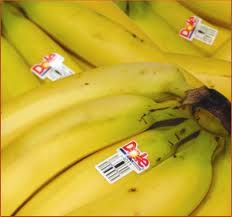Grocery Applications for GS1 Databar: Managing Fresh Food More Effectively
 Consider this fact.
Consider this fact.
The Food and Agricultural Organization of the United Nations reports that one-third of all the food produced in the world every year is lost or wasted.
And this one.
The monetary value of fresh food lost to spoilage - before it reaches the consumer - is estimated at $458 billion dollars.
That's a big part of the reason that food industry insiders are looking for better ways of keeping tabs on fresh food until it reaches the end consumer.
One strategy that shows promise is the use of bar codes that can encode dynamic data and can be read by today's most advanced laser-based scanners. That's where GS1 Databar bar codes come in.
Along with trying to get food to customers before it goes bad, businesses in the fresh food industry have the following challenges:
(1) Brand identification
(2) A need for changing (dynamic) data at the point of sale
(3) Product traceability via the POS
(4) Ability to mark down prices with the POS system
(5) Responsibility for consumer and food safety back to the source
(6) Timely product reordering
GS1 Databar codes carry more information than the current EAN/UPC symbologies, and can encode more data in a smaller bar code. Global standards have been available for trading partners since 2010.
A quick refresher on GS1 Databar symbologies
Not just a single bar code, GS1 Databar refers to a family of bar code symbologies, including seven different types. Some of the bar codes are small, designed for use on produce and smaller consumer packaging.
Of the group, the Databar Omnidirectional  and Databar Stacked Omnidirectional both contain 14-digits, and as the name indicates, can be read in either direction. The stacked bar code is especially useful for small produce items.
and Databar Stacked Omnidirectional both contain 14-digits, and as the name indicates, can be read in either direction. The stacked bar code is especially useful for small produce items.
GS1 Databar Applications
GS1 Databar codes aren't limited to loose fruits and vegetables. Meat, poultry and seafood are often subject to recalls, but it can be difficult to connect one cow to a package of meat.
With the improvements in point of sale systems and the increased capacity of the bar code, more information is now available at the supermarket. That means cashiers can see whether a food item has been recalled and know not to sell it to a customer.
The encoding of dynamic data also means that grocery managers can manage expiration dates more effectively. As the product nears the end of its viable life, automatic markdowns may cause a consumer to buy, where before the food item may just have been thrown away.
More and more grocery stores are combining these data-rich bar codes with enhanced point of sale systems, ensuring a safer and fresher food supply for consumers.
See related articles:
How the New FDA Bar Code Rule Can Impact Drug Packaging - ... code that can hold up to 1566 bytes of data most popularly used to mark small items for track and trace purposes, and GS1 DataBar, a small pyramid of stacked linear bar codes. GS1 allows for serialization ...
The ABCs of UPC - ... Currently, GS1 is implementing a new type of bar code, the GS1 DataBar™, which can carry more information and identify smaller items than the UPC bar codes. DataBar can also carry serial ...
GS1 Connect 2012 Conference Provides Education & Collaboration - ... out more about the GS1 Connect 2012 Conference. Grocery Applications for GS1 Databar: Managing Fresh Food More Effectively ...
{jcomments on}
